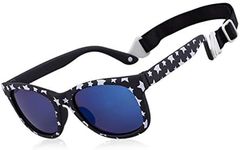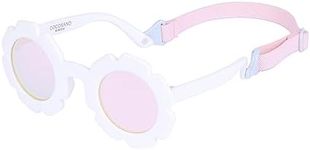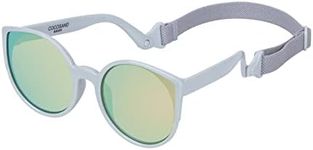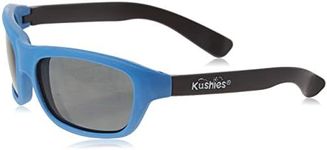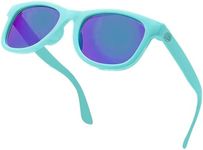Buying Guide for the Best Baby Sunglasses
Choosing the right sunglasses for your baby is about more than just style—it's about protecting their sensitive eyes from the sun's harmful rays. Babies' eyes are more vulnerable to UV damage, so picking sunglasses that offer proper protection and comfort is essential. When shopping, focus on features that ensure safety, durability, and a comfortable fit, as well as ease of use for both you and your baby.UV ProtectionUV protection refers to the sunglasses' ability to block ultraviolet rays from the sun, which can be harmful to your baby's eyes. This is the most important feature to look for, as babies' eyes are especially sensitive to UV light. Sunglasses are usually labeled with the level of UV protection they offer. Look for lenses that block 100% of both UVA and UVB rays. Avoid sunglasses that don't specify their UV protection, as they may not provide adequate safety. Always choose maximum UV protection for babies, regardless of how much time they spend outdoors.
Lens MaterialThe lens material affects both the safety and comfort of the sunglasses. Common materials include polycarbonate and acrylic. Polycarbonate lenses are lightweight, impact-resistant, and shatterproof, making them ideal for babies who might drop or chew on their sunglasses. Acrylic lenses are less expensive but can scratch more easily and may not be as durable. For most babies, polycarbonate is the best choice because it combines safety and comfort.
Frame MaterialFrame material determines how comfortable and durable the sunglasses will be. Flexible, soft, and BPA-free plastic frames are best for babies, as they are gentle on the skin and less likely to break. Some frames are made with rubberized materials for extra flexibility and comfort. Avoid metal frames, as they can be uncomfortable and may have small parts that pose a choking hazard. Always check that the frames are free from sharp edges and are designed specifically for infants.
Fit and SizeFit and size are crucial for ensuring the sunglasses stay on your baby's face and provide proper protection. Sunglasses that are too loose may fall off, while those that are too tight can be uncomfortable. Many baby sunglasses come with adjustable straps or bands to help keep them in place. When choosing, look for sunglasses labeled for your baby's age range, but also check the fit around the nose and ears. A good fit should be snug but not tight, and the sunglasses should cover the eyes completely without slipping.
Safety CertificationsSafety certifications indicate that the sunglasses meet certain standards for child safety. Look for sunglasses that are labeled as BPA-free and meet relevant safety standards for children's products in your country. This ensures that the materials are non-toxic and that the design is safe for babies. Certifications can give you peace of mind that the sunglasses are suitable for infants and have been tested for safety.
Comfort FeaturesComfort features include things like soft nose pads, lightweight construction, and flexible arms or straps. These features help ensure that your baby will tolerate wearing the sunglasses for longer periods. Babies are more likely to keep sunglasses on if they are comfortable and don't pinch or irritate their skin. When shopping, look for features that make the sunglasses easy to put on and take off, and that won't cause discomfort during use.
